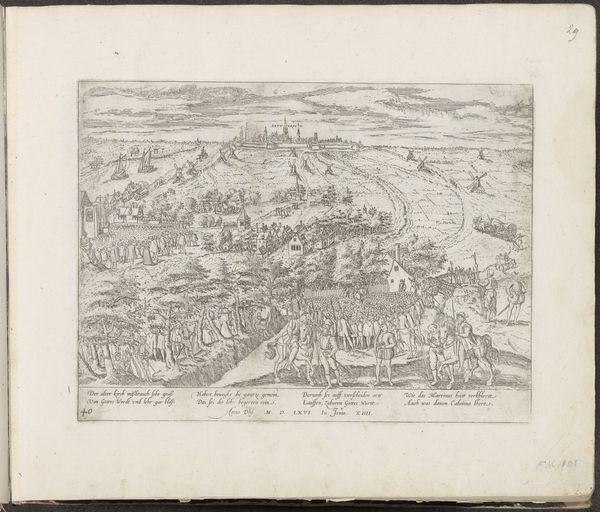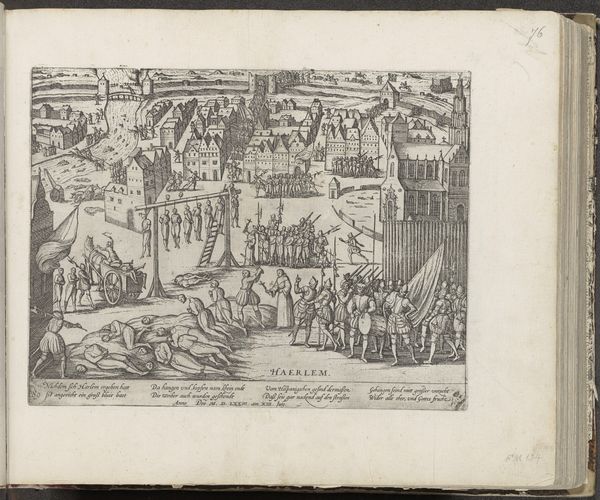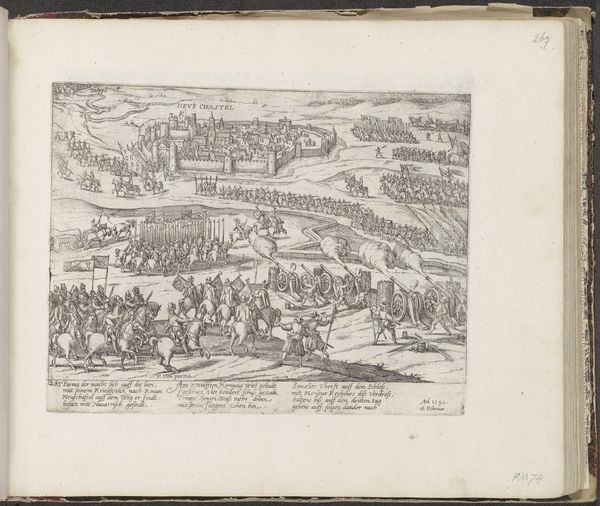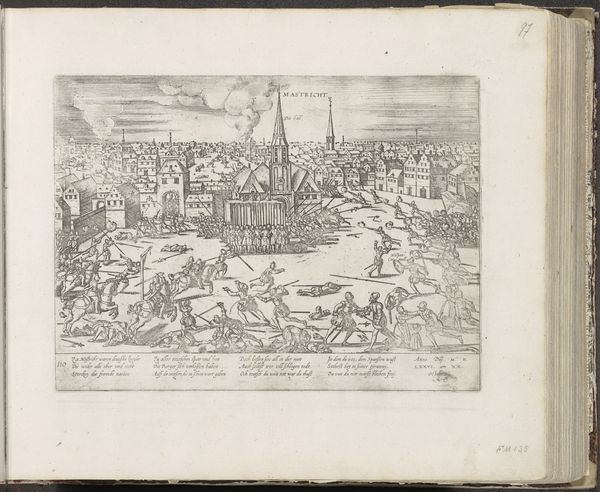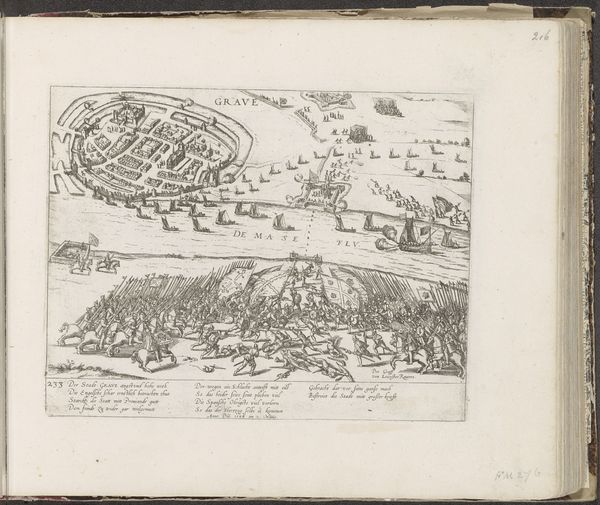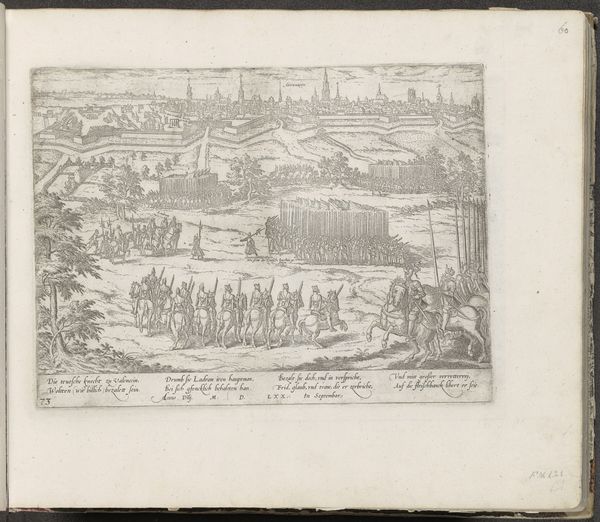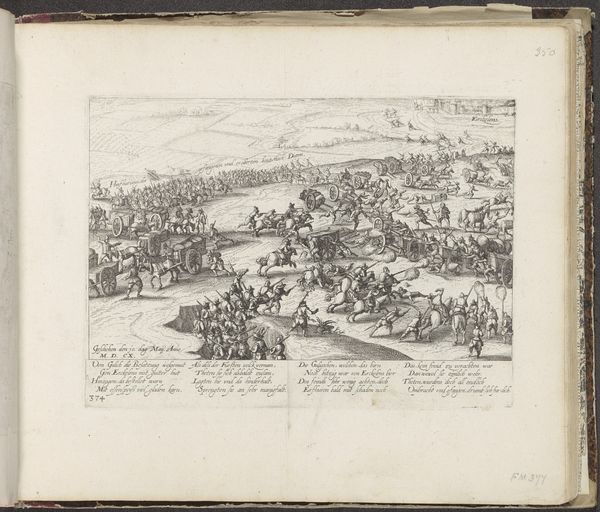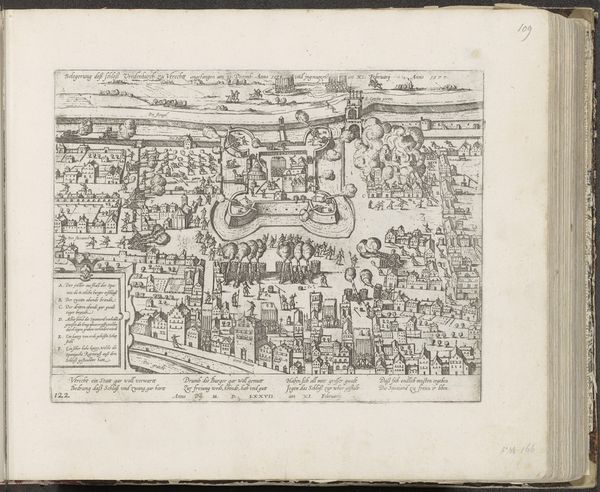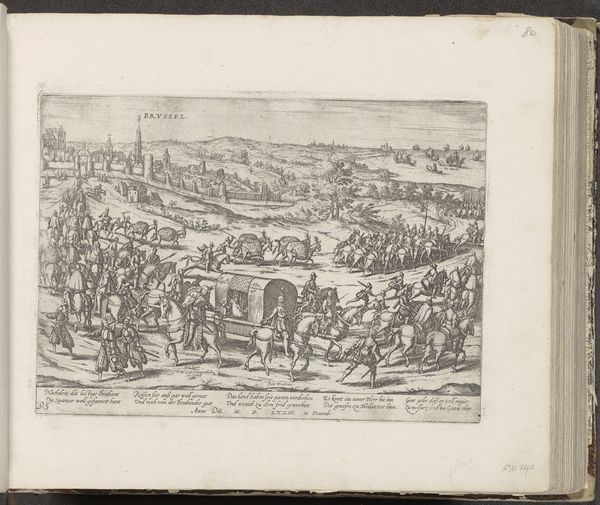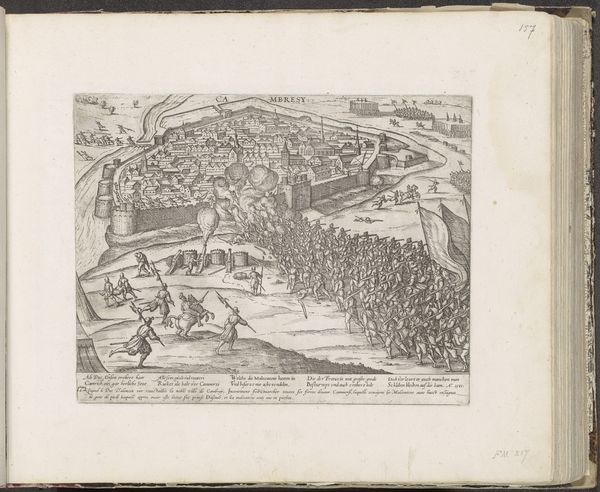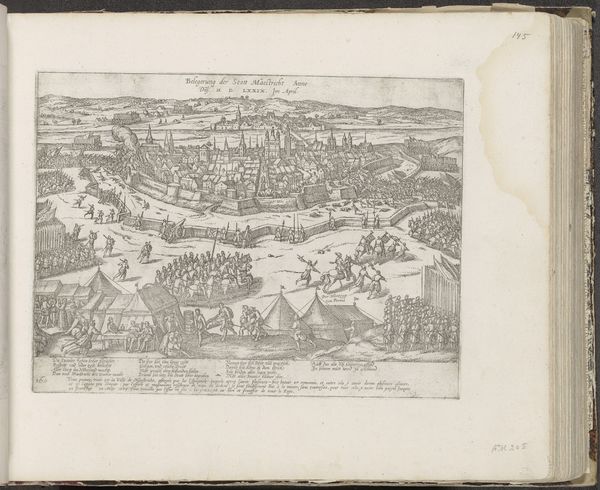
painting, print, paper, watercolor
#
baroque
#
painting
# print
#
landscape
#
paper
#
watercolor
#
coloured pencil
#
orientalism
#
cityscape
#
islamic-art
Dimensions: height 405 mm, width 521 mm
Copyright: Rijks Museum: Open Domain
Curator: Here we have an anonymous work, "Gezicht op Constantinopel," or "View of Constantinople," likely created sometime between 1639 and 1717. It's a watercolor and colored pencil on paper, a detailed cityscape rendering. Editor: My initial reaction is one of a strangely muted vibrancy. The pastel palette, even with its rich detail, lends a sense of distance, almost like viewing a stage set. It feels fabricated and definitely imbued with fantasy, especially those carefully placed figures. Curator: Indeed. Considering its possible timeframe, the work reflects a significant period of Ottoman-European interactions and rising orientalist fascinations. We should ask whose gaze constructed this vision, and for what purpose? What specific audience craved this imagery of Constantinople? Editor: Absolutely. And let’s examine the materials: paper, watercolor, and colored pencil speak to accessibility, perhaps suggesting a wider distribution or reproduction. Was this initially a print, perhaps hand-colored later, bringing “exotic” locales into European homes, and if so what does this imply in terms of object making and commercial appeal? Curator: The artist depicts Constantinople through a very specific lens. The arrangement and placement of structures speaks volumes. What narratives of power, trade, and religion were actively at play? Editor: Definitely, but there’s also the craftsmanship. Note the fineness of line in the buildings versus the broad washes defining the sky. There's a clear understanding of the material capabilities in portraying the physical density of a city versus the perceived boundlessness of the skies. Curator: Examining this cityscape reveals more than just architectural details, but rather how Europe processed its relationship with the Ottoman world. It shows an active production and consumption of carefully designed narratives. Editor: Precisely. By attending to these details of materiality, we understand how images like these became commodities. It brings clarity on how perception could be actively crafted. Curator: I see "Gezicht op Constantinopel" as less a record of geographic fact, and more a window into the intersectional power dynamics, filtered through the orientalist imaginary of the period. Editor: And I find its greatest intrigue rooted in understanding the labor and skill involved in turning paper, pigment, and imagination into a viewable, and marketable, vision.
Comments
No comments
Be the first to comment and join the conversation on the ultimate creative platform.

